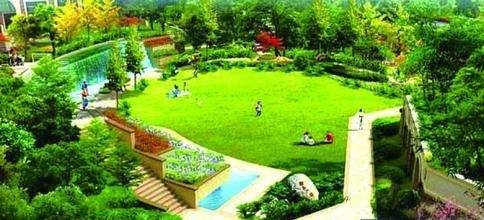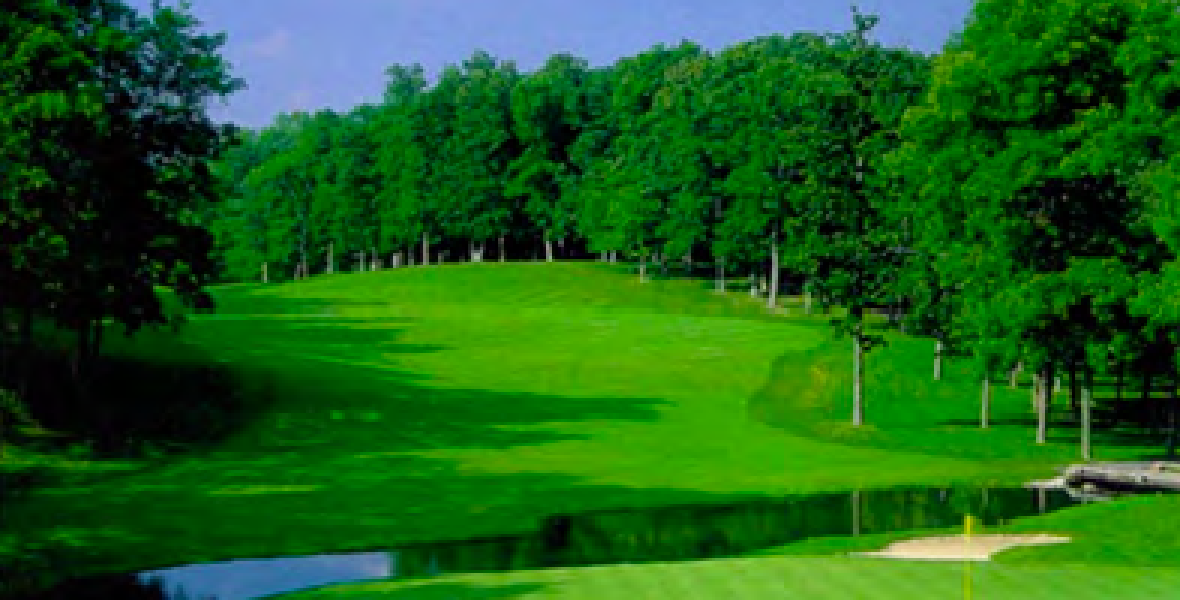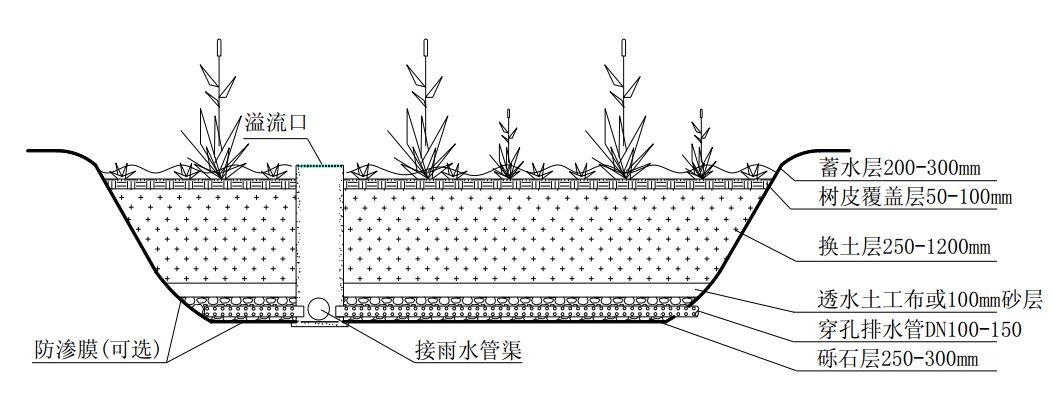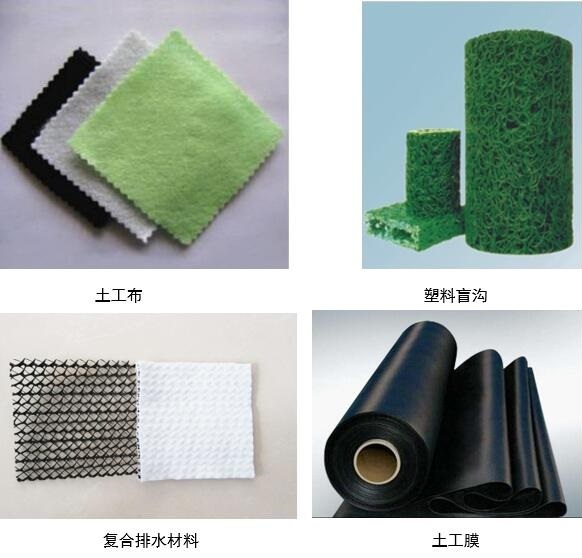08
2019
-
01
Sponge City Construction and Geosynthetics (5): Geosynthetics in Subsidence Greenland and Biological Retention Measures
Author:

I. Subsidence Green Space and Biological Retention Measures
Sunken Greenbelt has narrow sense and broad sense. In narrow sense, sunken greenbelt is also called low-lying greenbelt and concave greenbelt. Its typical structure is that the elevation of greenbelt is 5-25 cm lower than that of surrounding hardened ground. Rainwater spillway is located in Greenbelt or at the junction of greenbelt and hardened ground, and the elevation of rainwater outlet is higher than that of greenbelt and lower than that of hardened ground in broad sense. In addition to the narrow sense of sunken green space, green space also includes ecological rainwater facilities such as depressions, rainwater gardens, rainwater ponds, rainwater wetlands and multi-functional storage.

Ecological detention is a form of storage and management of runoff in shallow depressions or landscape areas using engineering soil and vegetation. The control areas include grassland filtration, sand and depression area, organic layer or cover, planting soil and vegetation. The requirement of soil and engineering technology in ecological detention zone is different from that of rainwater garden. The forms of ecological detention zone are different according to site position, such as ecological detention zone, detention tree pool, etc. There are many ways to classify the biological retention facilities. According to the permeability of the original soil and the specific requirements, the biological retention facilities can be divided into two types: soil replacement and non-soil replacement. If the permeability of the site soil is poor, it can be improved by replacing the non-proportioned sand, artificial filling and so on. According to the groundwater level, distance from the building, soil permeability and environmental conditions, it can be divided into three types: permeable, semi-permeable and non-permeable biological detention facilities: A. permeable type: the bottom of the facility does not contain perforated collecting tubes, all the runoff disposed of infiltrates into the underground, suitable for areas with low groundwater level and strong soil permeability; B. semi-permeable type: perforated collecting tubes are installed at the bottom of the facility; However, the collection pipe is located in the middle of the gravel drainage layer (with a certain depth of internal storage area), part of the disposal runoff seeps into the underground, part is collected, suitable for the area with a certain permeability; C. Non-permeable type: the bottom of the facility can be set with impermeable membrane or the permeability of the bottom soil is very small, the perforated pipe is located at the bottom of the gravel layer, and all the disposal runoff enters the perforated pipe, which is suitable. Areas near buildings or low groundwater levels. According to the appearance, size, construction location and scope of application of the facility, it can be divided into rainwater garden, detention zone (also known as biological ditch, ecological filter ditch), detention flower bed and ecological tree pond.
Application of geosynthetics in subsidence greenbelt and biological detention facilities
At least 50% of sunken green space should be used as sunken green space to retain rainwater. Depth of depression is 10-15 cm. Flood-tolerant varieties should be selected for plants in green space. The structure of subsidence green space is usually turf + planting soil (200-300 mm) + gravel (100-200 mm) + filter material + plain soil compaction, which requires that the drainage between gravel and plain soil can be effectively guaranteed for long-term infiltration.
Biological detention facilities should be well impervious when they are located in areas with steep terrain such as buildings, roads and mountainous areas. When the vertical and horizontal gradients are greater than 1:4, impervious facilities should be well prevented from collapsing by immersing the surrounding soil. Therefore, it is necessary to consult technical personnel of Geology and other related professions. In general, concrete impermeability is not required, unless it is built in the partition zone of the main urban road, concrete impermeability can be selected to meet the needs of road structure. Osmosis and reverse filtration materials can be lined at the bottom and side walls of the biological detention facility to prevent surrounding soil from entering the facility and affecting the facility function.

In the application of geosynthetics sunken green space and biological detention facilities, geosynthetics should be able to play the functions of infiltration and filtration to ensure the effective infiltration of rainwater into the soil, minimize the amount of rainwater discharged into the pipeline system, and play the functions of water storage and purification to ensure the effective retention of rainwater. The geosynthetics should be able to ensure smooth drainage, good hydraulic conditions and filtration conditions to ensure that it is not easy to silt up and achieve the goal of comprehensive utilization of rainwater.
Geotextiles play a major role in filtering subsidence green space and biological detention facilities. It is a network of fibers laid out by different equipment and processes, and then intertwined by needling and other processes to make different fibers intertwined, intertwined to standardize the fabric, so that the fabric is soft, plump, thick and stiff, in order to achieve different thicknesses to meet the use requirements. Fiber softness has a certain tear resistance and good deformation adaptability. Geotextile has excellent water permeability, filtration, durability and deformation adaptability. Its main functions are filtration, water filtration, infiltration, reinforcement, and good plane drainage capacity.
In subsidence Greenland and biological detention facilities, excess rainwater needs to be discharged in time. Therefore, plastic drainage belts, composite drainage boards and plastic blind ditches commonly used in geosynthetics have good permeability and filtration properties, which can be used as drainage facilities and combined with drainage pipes and canals to form a bottom drainage structure.
If seepage may cause a certain risk of collapse to the surrounding buildings, or when collecting and reusing the bottom effluent, seepage prevention should be done in the sunken green space and biological detention facilities. Geomembrane is a continuous flexible membrane material made of one or several synthetic materials. It has low permeability and can be used as impervious material. Geosynthetic clay liner (GCLs) is also a kind of geocomposites, and its anti-seepage performance is also excellent. Teandersheng Building Material Co., Ltd. welcomes your call to consult geosynthetics geogrid, geotextile, geomembrane, tunnel waterproof board, EVA waterproof board, plastic drainage board and other geotechnical materials.

undefined




